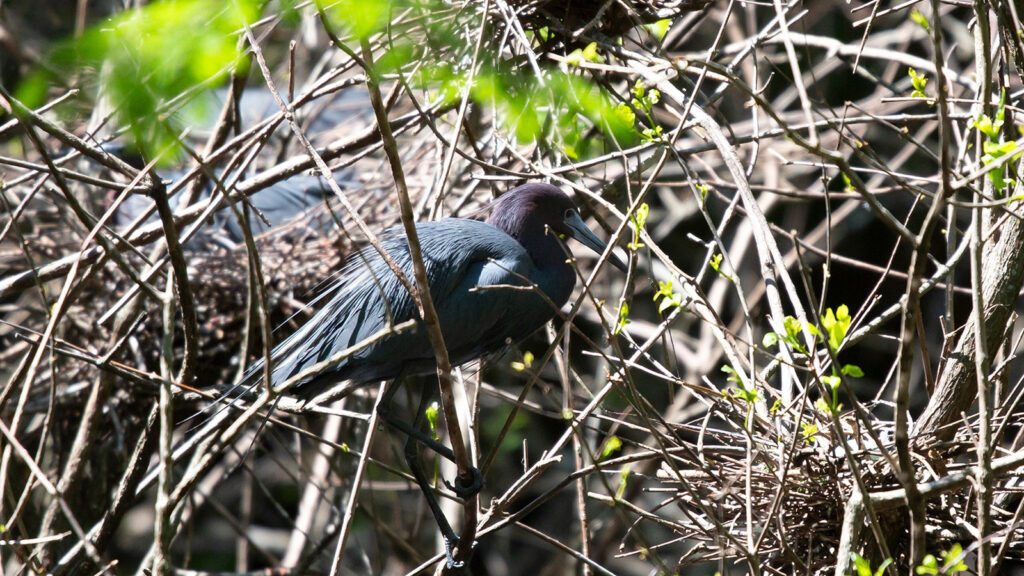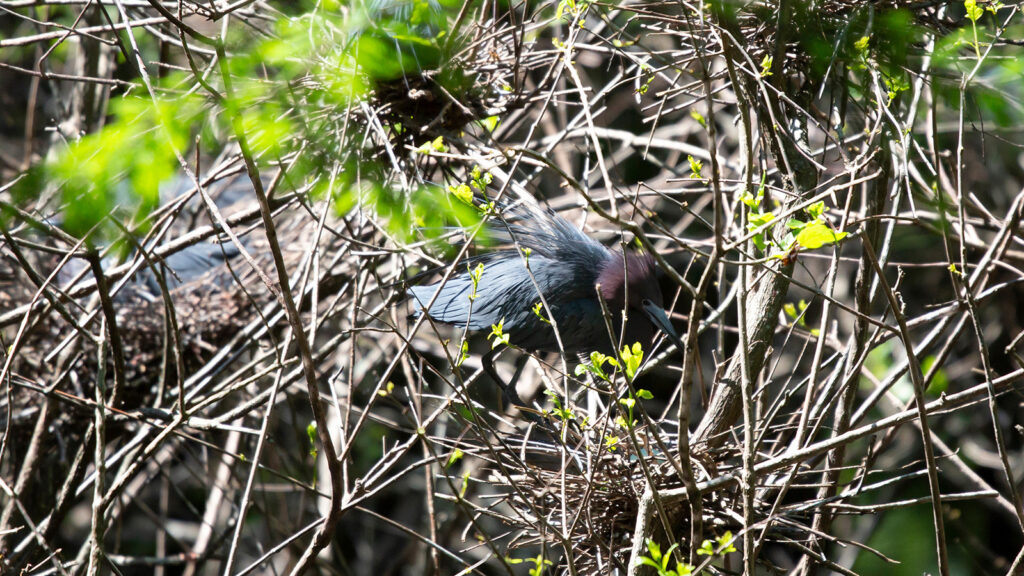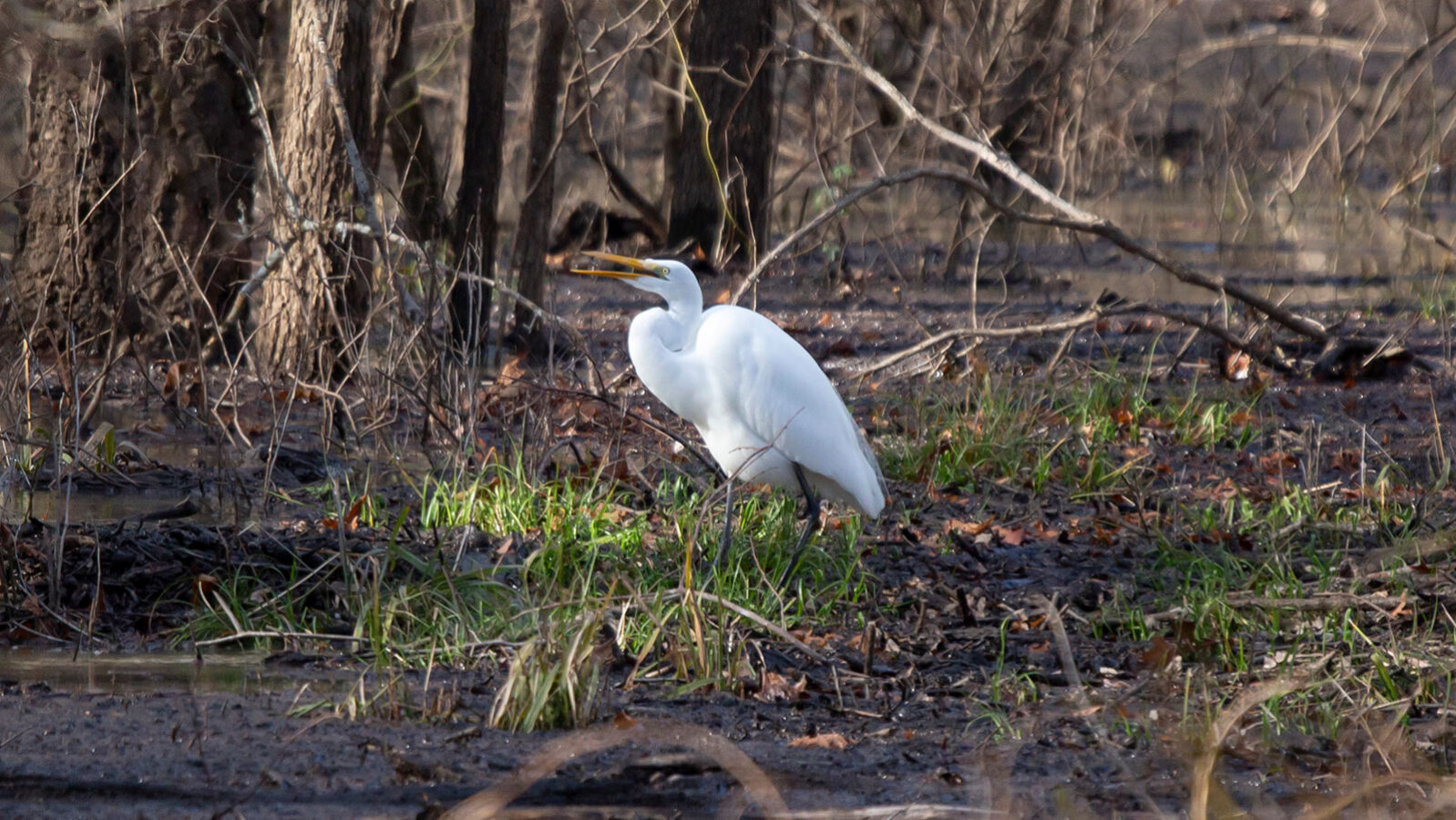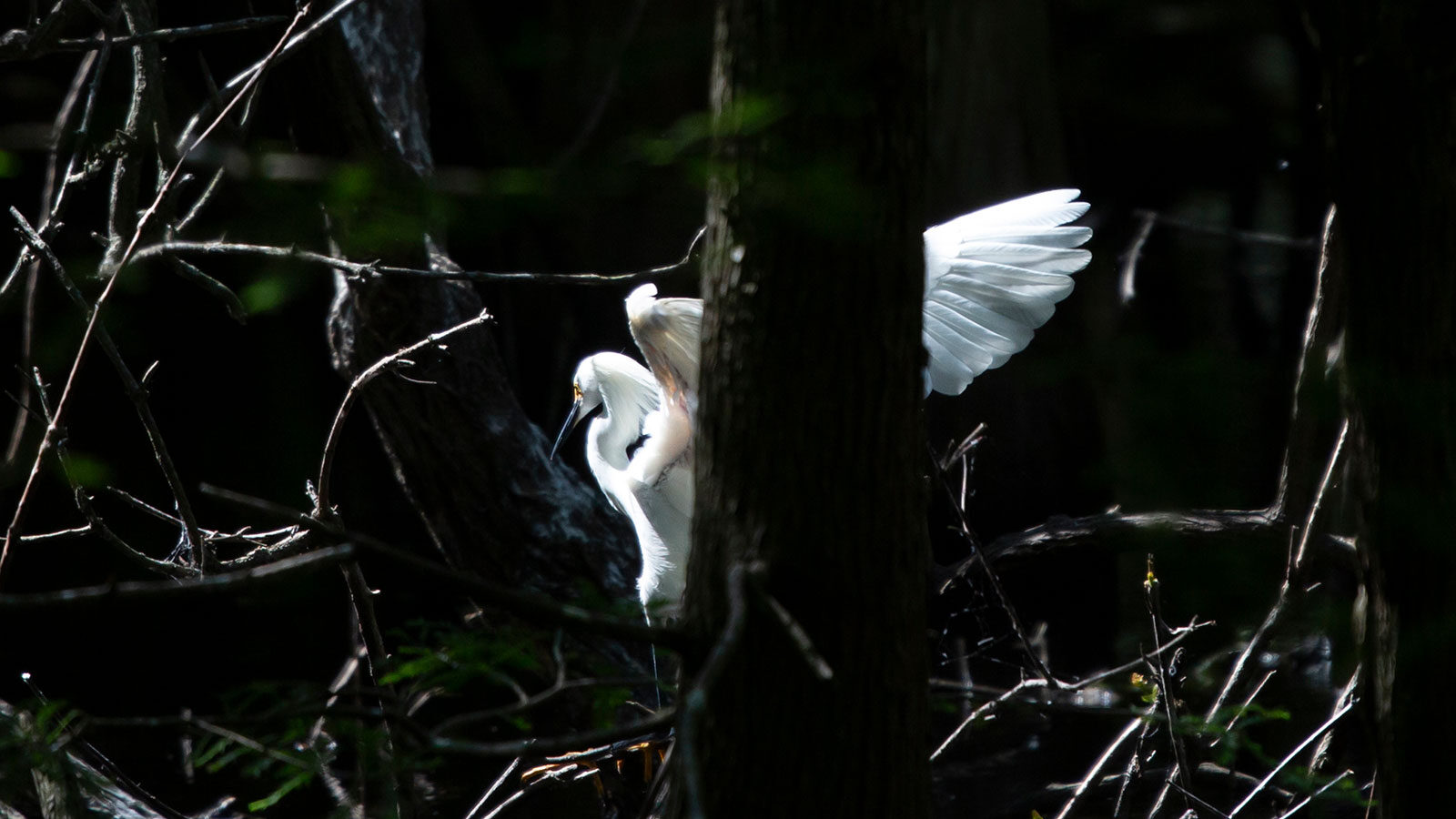
Did you know that great blue herons were safe from hunters in the early 20th century due to their lack of head plumes?
Little Blue Herons
at
a Glance

Key Features:
Little blue herons are dark blue birds with purple heads and necks. Immatures are white.
Least Concern - Population Decreasing
Habitat:
Flooded fields, marshes, ponds, streams, swamps, wetlands
nesting habits:
Little blue herons build nests in colonies, often with other herons, in trees or shrubbery out of sticks and twigs.
seasons little blue herons are active in our area:
Spring
Diet:
Fish, amphibians, mice, and reptiles
hunting Behavior:
Little blue herons hunt in shallow water by kicking up mud and water.
Commonly Confused With:
Snowy Egrets and Great Egrets

Immature little blue herons are often confused with great egrets because both are light colored birds with long necks.

Immature little blue herons are often confused with snowy egrets because both are white.